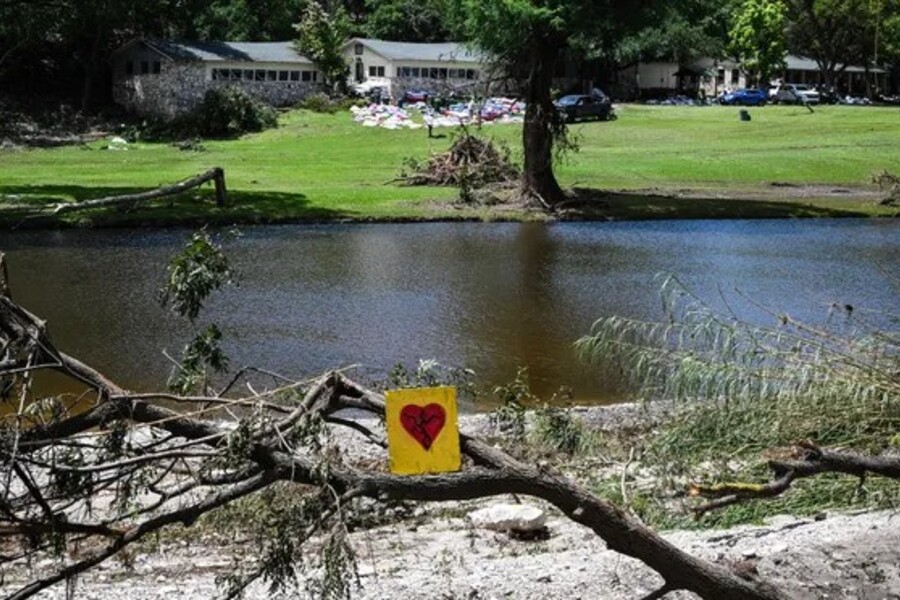What was supposed to be a cherished summer memory ended in unimaginable tragedy. A flash flood swept through Camp Mystic in Texas Hill Country, killing at least 27 children and counselors, and raising urgent questions about the safety of America’s summer camps as millions of parents entrust these seasonal sanctuaries with their children’s lives.
Every summer, more than 26 million children across the United States attend day and overnight camps, places traditionally associated with adventure, independence, and friendship. But the horrific events at Camp Mystic — one of the worst disasters in U.S. summer camp history — have jolted families and authorities alike, forcing a painful reconsideration of safety standards, natural disaster preparedness, and accountability.
The victims in Texas were caught in a sudden overnight flood along the Guadalupe River. As of July 8, five children and one counselor remained missing, with search-and-rescue operations ongoing.
“This is every parent’s nightmare,” said Sen. Ted Cruz during a visit to the disaster zone. Texas Governor Greg Abbott echoed the grief and pledged continued search efforts, describing the scene as “nothing short of horrific.”
While mass casualties are rare, camp-related deaths are not. USA TODAY’s investigation into summer camp incidents across multiple states reveals a persistent record of drownings, illnesses, and accidents, many of which have led to lawsuits and multimillion-dollar verdicts.
In 2005, 4-year-old Yoni Gottesman drowned at a California summer camp. The lawsuit revealed negligence on the part of camp staff who failed to enforce swim restrictions. A jury awarded the family $16.2 million in 2009 for both compensatory and punitive damages. “There’s a reason we’re so protective of children,” said attorney Tucker Merrigan, who is representing another grieving family. “They are the picture of human vulnerability.”
Merrigan is currently involved in a wrongful death suit involving 11-year-old Keoni Hubbard, who died in 2023 in a boating accident at a New Hampshire camp run by Scouting America (formerly the Boy Scouts). The boat was reportedly piloted by an 18-year-old with only one hour of experience.
Many camps maintain stellar safety records. For instance, New York State reported zero fatalities among its 2,400 regulated camps in 2024. These facilities cared for nearly 900,000 children. However, other states lack centralized safety reporting, leaving gaps in accountability and public awareness.
According to the American Camp Association (ACA), over 20,000 camps in the U.S. adhere to voluntary accreditation standards. These include requirements like smoke detectors, certified lifeguards, and specific camper-to-counselor ratios. However, critics point out that the ACA does not mandate specific natural disaster protocols — a glaring omission in the age of climate change.
“Unfortunately, camps are not immune to the effects of natural disasters,” said ACA Interim President Henry DeHart. “From hurricanes and fires to tornadoes and floods — climate change is reshaping the risks.”
Disaster response expert Natalie Simpson from the University at Buffalo suggests that flood-prone areas need a more proactive approach, similar to California’s mandated fire breaks around vulnerable properties. “If you’re caring for other people’s children, you have a higher duty of care,” Simpson said. “Maybe that scenic riverside cabin isn’t worth the risk.”
Camp Mystic, a nearly century-old Christian camp, was fully compliant with state safety standards, according to the Texas Department of Health Services. Emergency plans, including evacuation protocols, were reportedly posted in every building. However, state code does not require camps to have flood-specific warnings or evacuation mandates in place, even in vulnerable areas.
“This was a perfect storm,” said Simpson. “It hit at 3 a.m. on a holiday weekend. There’s not always a villain — sometimes, nature just wins.”
Beyond flash floods, summer camps have long struggled with safety oversight. According to a Wisconsin Department of Health Services report, common camp outbreaks include norovirus, Lyme disease, and whooping cough. New York’s camp records for 2024 list pink eye, gastroenteritis, COVID-19, and coxsackie virus as top concerns.
Yet it’s the preventable accidents that are most heartbreaking. The family of Yoni Gottesman, nearly two decades after his death, continues to advocate for greater awareness. Their website serves as both a memorial and a warning platform for parents. “Every parent should demand that law enforcement protect their children, not businesses that place profits over safety,” said their legal team at Cappello & Noël.
Experts recommend parents take the following steps when evaluating summer camps:
- Ask for Accreditation: Ensure the camp is ACA-accredited or state-licensed.
- Inquire About Disaster Preparedness: Does the camp have a plan for floods, fires, or other emergencies?
- Staff-to-Camper Ratios: Confirm age-appropriate supervision (e.g., one counselor for every five campers under age 6).
- Check Staff Backgrounds: Are counselors trained in CPR, first aid, and lifeguarding?
- Ask About Return Rates: A return rate of 40% or higher among staff signals strong leadership and morale.
- Verify Medical Protocols: How are illnesses, injuries, or outbreaks handled?
While the investigation into the Camp Mystic tragedy continues, the broader implications are already being felt. Lawmakers and safety councils are being urged to modernize camp safety standards in light of extreme weather patterns and to enhance oversight of private and religiously affiliated camps.
As the grief-stricken families mourn their devastating losses, many hope that awareness will prevent future tragedies. For now, one painful truth remains: the cherished American tradition of summer camp needs a stronger safety net to keep childhood dreams from becoming nightmares.

